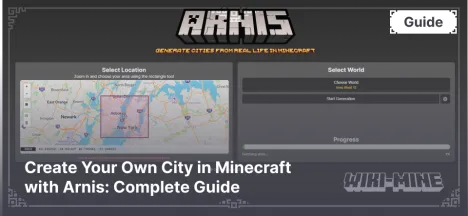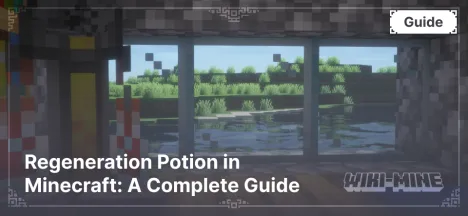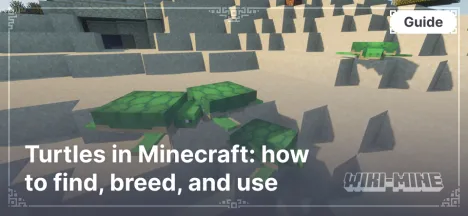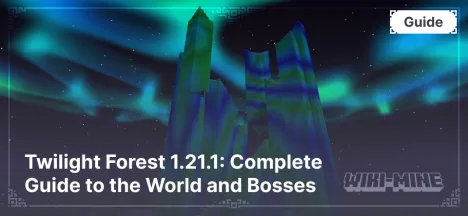Botania Guide: From Flowers to Gaia Boss
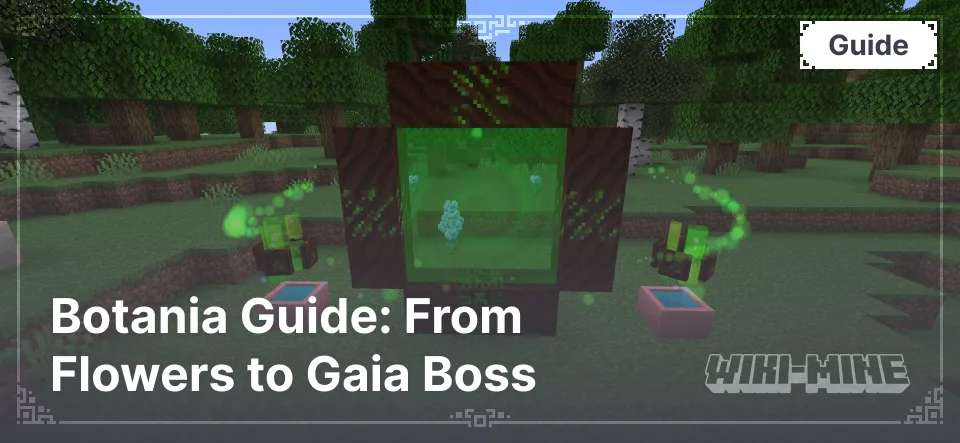
A complete Botania guide — from basic mechanics and mystical flowers to mana systems, runes, equipment, and the Gaia boss. Everything you need to master the mod.
Article Navigation
Start: Mythical Flowers
While exploring the world, you will encounter mythical flowers—the main natural resource in Botania. From them, you get mystical petals, which are used in most crafting recipes.
 Some flower species are especially important for the next stages, so be sure to pay attention to them in advance.
Some flower species are especially important for the next stages, so be sure to pay attention to them in advance. 
Obtaining Petals
Collected flowers can be broken down into petals. One flower gives 2 petals of the corresponding color. 
If you don’t want to spend time searching, you can craft Floral Fertilizer—it can grow random mystical flowers on grass. 
Petals can also be turned into blocks, which is convenient for storage and decoration. 
To store a large number of petals and flowers, you can use a special pouch which holds up to 64 flowers of each type.


Lexica Botania Book
At an early stage, it is recommended to create the Lexica Botania—the main reference book for the mod.
 To craft it, you need to combine a book with any sapling.
To craft it, you need to combine a book with any sapling.
The book contains descriptions of all Botania crafts and mechanics. It is divided into knowledge sections:
Human Knowledge—available as soon as you create the book.
To obtain Elven Knowledge, you need to:
Build and activate the Portal to Alfheim.
Throw the Lexica Botania into the portal.
Get back the updated version of the book, supplemented with information from the elves.
Entries added by the elves are highlighted in green.
When you kill Gaia Guardians II and obtain relics, the book is automatically updated to add descriptions of these artifacts.
(Sections 2 and 3 will be covered later.)
Petal Apothecary
The next important step is to create a Petal Apothecary.

It is used to create:
Mana-generating flowers
Functional flora
⚠️ After adding all the required components into the Apothecary, you always need to throw in seeds at the end to finalize the crafting.
First Flower: Pure Daisy
To create a Pure Daisy, you will need:
Fill the Petal Apothecary with water using a bucket.
Throw in 4 white mystical petals (obtained from white mystical flowers) into the water.
Finally—add seeds to finish the creation.
![]()
Purpose of the Pure Daisy
The Pure Daisy is the first and one of the key flowers in Botania. Its main function is transforming blocks placed around it:
Regular wood → Livingwood
Stone → Livingrock
Simply place the required blocks near the flower and wait about a minute for the transformation.


Additional Transformations
In addition to wood and stone, the Pure Daisy can also transform other blocks:
Netherrack → Cobblestone
Soul Sand → Sand
Ice → Packed Ice
Water → Snow
Although these changes are not as essential as creating living blocks, they can be useful in some situations.
Crafting the Wand of the Forest
After obtaining Livingwood, you can craft Livingwood Twigs from it. 
Using these twigs, you can create one of the main tools of the mod—the Wand of the Forest. 
Primary Modes of the Wand of the Forest
The wand has two operation modes:
Bind Mode—used for linking blocks to each other.
Function Mode—used for interacting with certain devices and flowers.
Switch between modes by Shift + right-clicking in the air.
Example Usage: Linking Mana Generation
To set up mana transfer from a flower to a pool, use the wand in Bind Mode:
Shift + right-click on the generating flower.
Shift + right-click on the Mana Spreader—the flower will now send mana to it.
Shift + right-click on the Spreader, then Shift + right-click on the Mana Pool—the Spreader will direct mana into the pool.
![]()
Mana Spreader
The Mana Spreader is a key block for moving mana between objects in the world. It is used to transfer mana from generating flowers to storage (e.g., Mana Pools) or to other devices.


Key Information
When placed, it sends mana in one of the six directions (depending on orientation).
You can change the direction of the flow with the Wand of the Forest in Bind Mode:
Shift + right-click on the Spreader—fix the sending point.
Shift + right-click on the target block—set the direction.
The device has an internal mana buffer which fills up from adjacent generating flowers.

Control and Visualization
To see how much mana is inside, right-click on the Spreader with the wand.
When holding the wand, a beam appears, indicating the transfer direction.
When you hover over the Spreader, you see:
The current transfer target.
A glowing dot—indicating the distance limit; beyond that point, mana will start to be lost in transit.
Mana Pool
The Mana Pool is the main block for storing mana in Botania.
Main Functions
Mana is transferred to the pool via the Mana Spreader.
Nearby Spreaders can pull mana from the pool to fill their own buffer.
Functional flowers use mana directly from a nearby pool.
Types of Pools
There are two variants of mana pools:
Diluted Mana Pool—stores a very small amount of mana.
Regular Mana Pool—can hold 100 times more than the diluted one.
![]()
It’s recommended to move straight to the regular version for stable operation of the mechanics.
What Is Mana?
Mana is a special form of magical energy used in all Botania mechanisms and interactions. Visually, it manifests differently depending on the environment. 
How to Obtain Mana
Mana is created by generating flowers and then transferred to a pool via spreaders.
Transformations in a Mana Pool
If you throw certain items into a mana-filled pool, they transform:
Diamond → Mana Diamond
Iron → Manasteel
Ender Pearl → Mana Pearl
Redstone / Gunpowder / Glowstone Dust → Mana Powder
You can also get:
Mana String—from normal string
Mana Glass—from glass
Mana Cookie—from a cookie
Runes and the Runic Altar
Runes are an important component in Botania. They are used in creating magical tools, flowers, and advanced mod items.
To craft them, you need a Runic Altar.
Crafting the Runic Altar
To create a runic altar, you will need:
Livingrock
Mana Pearl or Mana Diamond
![]()
Using the Runic Altar
Place the recipe components for the rune on the altar—right-click or simply drop them on top.
Link a Mana Spreader to the altar, directing it with the Wand of the Forest.
Wait until the altar has received the required amount of mana.
Throw one Livingrock on the altar and right-click it with the wand to finalize the crafting and get the rune.
⚠️ To remove the last added item—Shift + right-click the altar with an empty hand (before mana transfer starts).
Example: Rune of Water
An example of a basic rune recipe—the Rune of Water. 
Types of Runes
There are a total of 16 runes, divided into groups:
Basic (Elemental Runes): Fire, Water, Air, Earth.
Crafted in pairs of 2.![]()
![]()
![]()
Intermediate (Seasonal Runes): Spring, Summer, Autumn, Winter.
![]()
![]()
![]()
Advanced (Seven Deadly Sins Runes)
![]()
![]()
![]()
![]()
Rune of Mana—a standalone rune used in various recipes.
All recipes can be found in Lexica Botania.
Types of Flowers
In Botania, all magical flowers are divided into two types:
Generating Flora—produces mana.
Functional Flora—performs various actions by consuming mana.
Generating Flora
Generating flowers produce mana from external sources. Below is a list of the currently relevant generating flowers.
Endoflame
Generates mana by consuming burnable items (coal, wood, etc.).
Does not work with items that leave by-products (e.g., a bucket of lava).
![]()
Hydroangeas
Absorbs standing water in a 3×3 radius at the same height.
Works faster during rain.
![]()
Gourmaryllis
Consumes dropped food in a 2×2 area.
The amount of mana depends on the food’s hunger-restoring value.
![]()
Munchdew
Consumes leaves in a 32×32×16 area.
Saplings do not drop when leaves are consumed.
![]()
Kekimurus
Consumes cake within 5 blocks.
![]()
Thermalily
Absorbs lava in a 3×3 area.
After working, it enters a 5-minute cooldown.
![]()
Rosa Arcana
Absorbs XP from players in a 1×1 area above the flower.
![]()
Narslimmus
Consumes slimes in a 32×32×8 area.
The amount of mana depends on the slime’s size.
![]()
Entropinnyum
Absorbs TNT explosions in a 3×3 area.
Works only if it had no mana prior to the explosion.
![]()
Spectrolus
Consumes wool of various colors in a specific sequence (starting with white).
Range—2 blocks.
![]()
Rafflowsia
Consumes nearby passive flowers, converting them into mana.
![]()
Dandelifeon
Generates mana from the transformation of Cellular Blocks within a 25×25 area.
Requires a redstone signal to activate.
![]()
Functional Flora
Functional flowers do not produce mana but use it to perform various actions. Most of them can be disabled by a redstone signal—especially those whose recipe includes a Redstone Root.
Agricarnation
Speeds up the growth of crops within 5 blocks.
Continues consuming mana even when everything is fully grown.
Can be disabled by a redstone signal.
![]()
Bubbell
Creates an air dome with an 11-block radius, pushing water away.
When it stops working, water returns to its place.
![]()
Clayconia
Turns sand into clay within a 5-block radius.
Uses a minimal amount of mana.
![]()
Daffomill
Pushes items in a set direction.
Direction is changed by Shift + right-click with the wand.
Can be disabled by redstone.
![]()
Exoflame
Uses mana to automatically power furnaces in a 5-block radius.
![]()
Fallen Kanade
Gives a Regeneration III effect to players within 2 blocks.
Consumes mana to maintain the effect.
![]()
Heisei Dream
Makes hostile mobs fight each other.
Range—5 blocks.
Continuously consumes mana even if no mobs are around.
![]()
Hopperhock
Moves items into the nearest chests.
Without mana—6-block range; with mana—up to 10.
Supports item filtering via item frames.
Filter mode toggles with a right-click from the wand.
Can be placed on Podzol or Mycelium to set a pickup delay.
Disabled by a redstone signal.
![]()
Hyacidus
Poisons mobs and reduces their health to 1 HP (does not affect players).
Range—6 blocks.
Disabled by redstone.
![]()
Jaded Amaranthus
Randomly plants mystical flowers on available blocks within 9 blocks.
Works as long as it’s supplied with mana and there’s space.
Disabled by redstone.
![]()
Loonium
Creates a force field in an 8-block radius, preventing mobs and animals from approaching.
![]()
Marimorphosis
Transforms normal stone into metamorphic blocks (or cobblestone).
Range—17×17×11.
Speed—10 blocks/second, mana consumption—12 per block.
![]()
Medumone
Applies a Slowness effect to hostile mobs within 6 blocks.
Does not affect players.
Can be disabled by redstone.
![]()
Orechid
Transforms stone blocks into ore, consuming a large amount of mana.
Range—11×11×6; the center is the flower itself.
Exact area: 5 blocks in each horizontal direction, 2 blocks up, 3 down.
The rarity of the resulting ore depends on its frequency in the world.
Disabled by a redstone signal.
![]()
Orechid Ignem
A variant of the regular Orechid but works in the Nether.
Transforms Netherrack into nether ores.
Has a separate recipe.
![]()
Pollidisiac
Automatically feeds animals in a 6-block radius by using mana.
The food source—nearby chests or dropped items.
Allows animals to breed.
![]()
Rannuncarpus
Picks up and places dropped blocks.
Works without mana, but the range is increased with mana.
Can be disabled by a redstone signal.
![]()
Solegnolia
Disables the effect of the Ring of Magnetization within 4 blocks.
Does not require mana.
All flowers whose recipes include a Redstone Root can be disabled by a redstone signal.
![]()
Spectranthemum
Teleports dropped non-magical items within 12 blocks to a designated point.
Requires mana.
To set the target location—Shift + right-click with the wand in Bind Mode.
An item can only be teleported once.
![]()
Tangleberrie
Slows the movement of mobs and animals within 5 blocks.
Continues to consume mana even if no targets are nearby.
![]()
Tigerseye
Blocks creeper explosions, preventing their detonation.
Requires mana.
![]()
Vinculotus
Teleports Endermen to the flower if they enter its range.
Works only on mobs.
Can be disabled by a redstone signal.
![]()
Portal to Alfheim (Alfheim Portal)
The Alfheim Portal is used for exchanging items with elves, granting access to new resources and recipes.
Required Materials
To build the portal, you need:
8 blocks of Livingwood
3 blocks of Glimmering Livingwood
1 Elven Gateway Core
2 Mana Pools
2 Natura Pylons
![]()
![]()
![]()
![]()
Activating the Portal
Build the portal frame according to the diagram (see image).
Place the mana pools on each side of the portal and place the pylons above them.
Make sure each pool has enough mana.
Right-click the portal core with the wand—it will activate.
![]()
Gaining Elven Knowledge
The first item you should send through the portal is the Lexica Botania.
It will return upgraded with a new section called “Elven Knowledge” containing advanced recipes and information.
Item Exchange via the Portal
You can now throw certain items into the portal to obtain rare resources:
| Send into the Portal | Receive |
|---|---|
| Livingwood | Dreamwood |
| 2 Manasteel Ingots | 1 Elementium Ingot |
| Mana Pearl | Pixie Dust |
| Mana Diamond | Dragonstone |
| Regular Quartz | Elven Quartz |
| Mana Glass | Elven Glass |
After opening the portal and obtaining the updated book, most of the advanced Botania recipes become available.
If you’re ready, we can move on to creating Terrasteel or the next stage!
Terrasteel
Terrasteel is one of the most powerful magical metals in Botania. It is required for high-level gear, tools, and advanced mechanisms.
Required Components
To obtain Terrasteel, you need:
3 blocks of Lapis Lazuli
1 block of Manasteel
Runes: Fire, Water, Earth, Air, and Mana
![]()
Constructing the Setup
Craft the Terra Plate.
Place it on top of a structure made of 5 blocks of Livingrock and 4 blocks of Lapis.
Place 1 or 2 Mana Pools on the sides, filled with mana in advance.
Put Sparks on top of the plate and on each pool to transfer mana.
![]()
![]()
The Creation Process
On the Terra Plate, throw (in no particular order):
1 Mana Pearl
1 Mana Diamond
1 Manasteel Ingot
If there is enough mana in the pools, after a few seconds you will get 1 Terrasteel Ingot.
⚠️ Mana cost—half of a full mana pool (approximately equal to one Mana Tablet).
Usage
Terrasteel is used in crafting:
Armor and tools
Terra Blade
Natura Pylons
Other advanced mechanisms
Details about Terrasteel-based crafts will be discussed in later sections.
Alchemic Catalyst
The Alchemic Catalyst is used to transform certain items into others in a Mana Pool. It works similarly to a regular pool but provides access to special conversion recipes, consuming a set amount of mana.
Crafting
To make the catalyst, you need:
Livingrock
2 Gold Ingots
Mana Pearl
2 Brewing Stands
![]()
Placement
Place the catalyst under a Mana Pool.
Use either a standard or reinforced pool, filled with mana.
Throw items into the pool—if the catalyst is present, they will be transformed.
![]()
Sample Conversions
Below is a list of available transmutations:
| Original Item | Result |
|---|---|
| Rotten Flesh | Leather |
| Glowstone | 4 Glowstone Dust |
| Quartz Block | 4 Quartz (all types) |
| Stone Brick | Chiseled Stone Brick |
| Snow | Ice |
| Vines | Lily Pad (and vice versa) |
| Poisonous Potato | Regular Potato |
| Blaze Rod | Nether Wart |
| Gunpowder | Flint (and vice versa) |
| Book and Quill | Name Tag |
| Wool | 3 String |
| Cactus | Slimeball (and vice versa) |
| Ghast Tear | Ender Pearl |
| Redstone | Glowstone Dust (and vice versa) |
| Cobblestone | Sand |
| Hardened Clay | Red Sand |
| Diorite / Andesite / Granite / Stone | Mutual conversion |
| Clay Block | 4 Clay Balls |
| Brick Block | 4 Bricks |
| Popped Chorus Fruit | Chorus Flower |
| Dirt | Coarse Dirt |
Other transformations include:
Wood can be converted into other types of wood
Saplings—into other sapling types
Fish—into other fish types
Crops (wheat, potatoes, carrots, melon/pumpkin seeds, cocoa beans) change in a cycle
Grass Types (tall grass, fern, dead bush) are interchangeable
Flowers—converted to other types
The catalyst is useful for recycling surplus resources and obtaining rare components without visiting other dimensions. All available recipes can be found in Lexica Botania.
Mana Enchanter
The Mana Enchanter is a special structure that allows you to transfer enchantments from books to items without destroying the books. It works using mana and does not require experience points.
Requirements for Construction
To build the Mana Enchanter, you need:
17 obsidian blocks
1 lapis lazuli block
10 any mystical flowers
6 Mana Pylons
The structure covers a 7×11-block area.
Building Process
Place the obsidian according to the diagram (see screenshot).
In the center of the structure, place the lapis block.
Plant the 10 mystical flowers at the specified positions.
Set up the 6 Mana Pylons around the center.
To activate—right-click the lapis block with the wand.
⚠️ IMPORTANT: There must also be obsidian beneath the lapis block, or the altar will not activate.![]()
Usage
Right-click on the altar—place the item you want to enchant (cannot use pre-enchanted items).
Drop enchanted books around the structure (on the ground near the altar).
Right-click the altar with the wand—the process of scanning the books will begin.
After scanning, a magical circle appears, indicating you can pick up the books. 
Characteristics
The books do not disappear—they can be reused.
Only the first enchantment on each book is applied.
Mana consumption depends on:
The level of the enchantment
The number of books
Basic Manasteel Equipment
Manasteel is the basic magical metal in Botania, combining the durability of iron with magical functionality.
Tools
Manasteel tools have the following features:
They have durability comparable to iron tools but slightly higher.
They automatically repair themselves if you have mana in your inventory.
They’re crafted from Manasteel Ingots and Livingwood Twigs.
Special Features:
Botania pickaxes—right-click to place torches from your inventory.
Botania axes—right-click to automatically plant saplings from your inventory.
Manasteel Shears—yield more wool when shearing sheep.



Armor
Manasteel armor:
Has protection on the level of iron armor.
When you take damage, it uses mana from your inventory instead of durability.
Wearing a full set gives a bonus: −10% mana cost when using mana tools and Botania devices.
![]()
![]()
Basic Elementium Equipment
Elementium gear is an improved magical counterpart of Manasteel, obtained via the Portal to Alfheim. It is appropriate for a more advanced stage of the game.
Tools
Elementium tools are crafted from:
Elementium Ingots
![]()
Dreamwood Twigs
![]()
![]()
Features:
All tools repair themselves with mana from your inventory.
Full repair uses ~16% of a Mana Tablet’s capacity.
Elementium Pickaxe
Instantly breaks basic blocks (stone, dirt, sand, gravel).
Granite, Andesite, and Diorite only drop if the player sneaks (Shift) while mining.
![]()
Elementium Shovel
Destroys the entire column of loose blocks (sand/gravel) both above and below the target.
![]()
Elementium Axe
When used as a weapon, it has a chance to drop the mob’s head.
![]()
Elementium Sword
When the holder takes damage, there’s a 5% chance of summoning a Pixie.
The chance stacks with the effect of the armor.
![]()
Elementium Shears
Allows you to shear sheep up to 11 blocks away.
![]()
Elementium Armor
Protection at the level of iron armor.
Damage is offset by mana from the inventory.
Full set gives:
−10% mana cost for elementium items
+50% chance to summon a Pixie
Can apply Pixie potion effects to enemies


Basic Terrasteel Equipment
Terrasteel gear is an advanced class of equipment, offering powerful abilities that scale as you accumulate mana and upgrades. 
Tools
Terra Shatterer
An enhanced pickaxe capable of area mining.
Has 6 ranks: D → C → B → A → S → SS.
To raise its rank, you must throw it into a mana pool. The amount of mana required increases by 10× for each new level.
Abilities by Rank:
| Rank | Breaking Area | Special Ability |
|---|---|---|
| D | 1 block | None |
| C | 3-block column | Yes |
| B | 3×3 | Yes |
| A | 5×5 | Yes |
| S | 7×7 | Yes |
| SS | 11×11 | Yes |
Combined with an Elementium Pickaxe, the Terra Shatterer also instantly destroys “junk” blocks (dirt, sand, gravel, etc.).
The tool passively consumes mana, even when inactive—you need a mana reserve in your inventory.
Does not despawn if dropped—it’s protected from despawning.
![]()
Terra Axe
Chops down the entire tree (similar to “Treecapitator”).
Self-repairs using mana.
Consumes a small amount of mana for each block cut.
![]()
Terra Blade
A powerful weapon. In addition to melee, it can shoot a damaging projectile (similar to energy waves).
This ability activates when attacking at range.
![]()
Terrasteel Armor
Terrasteel armor:
Protection at the level of diamond.
When taking damage, it consumes mana, not durability.
Crafting requires:
Terrasteel Ingots
Manasteel Armor pieces
Livingwood Twigs
Seasonal Runes
Full Set Passive Bonuses:
Knockback resistance
Passive regeneration: +2 health every 4 seconds (if not hungry)
−20% mana cost on tools
Weak passive mana generation
The ability to embed 6 “Wills” that drop from the Gaia boss (covered later)



Rods
Rods are special magical tools that perform various actions by consuming mana. They are all made with Livingwood Twigs or Dreamwood Twigs, often with runes and rare components.
Rod of the Depths
Places a cobblestone block on right-click.
Uses a small amount of mana.
Recipe: cobblestone, Fire and Water Runes, Livingwood Twigs.
![]()
Rod of the Lands
Places dirt blocks on right-click.
Recipe: dirt, Earth Rune, Livingwood Twigs.
![]()
Rod of the Highlands
Lets you place dirt in mid-air when right-clicking.
Recipe: Rod of the Lands, Air Rune, Pixie Dust.
![]()
Rod of the Seas
Places water on right-click. Very handy for filling the Apothecary.
Recipe: water bottle, Water Rune, Livingwood Twig.
![]()
Rod of the Molten Core
Turns blocks into their smelted version (e.g., sand into glass).
Recipe: blaze rod, Fire Rune, Livingwood Twigs.
![]()
Rod of the Hells
Creates a ring of fire in a 5-block radius.
Duration—15 seconds. Cooldown—60 seconds.
Recipe: blaze powder, Fire Rune, Livingwood Twig.
![]()
Rod of the Plentiful Mantle
Highlights all ores within 15 blocks through walls.
Consumes a lot of mana. Highlight colors are random.
Recipe: Mana Diamond, Livingwood Twigs.
![]()
Rod of the Shaded Mesa
Grabs mobs or items with right-click and moves them around.
Release—another right-click; throw—left-click.
Recipe: wheat, Dragonstone, Dreamwood Twigs.
![]()
Rod of the Shifting Crust
Allows you to swap blocks:
Shift + right-click—select block.
Right-click—replace an area of 7×7×7.
Left-click—single replacement.
You need spare blocks in your inventory or a suitable rod.
Recipe: Rune of Sloth, 2 stone, Livingwood Twigs.
![]()
Rod of the Skies
Launches the player upward on right-click.
Recipe: Air Rune, feather, Livingwood Twig.
![]()
Rod of the Terra Firma
Flattens terrain:
Range: 33×33×33
Fills below the player, clears above
Does not work below sea level
Recipe: 4 Seasonal Runes, Rod of the Lands, 1 Terrasteel Ingot, meadow seeds.
![]()
Rod of Unstable Reservoir
Fires homing rockets at enemies within 12 blocks.
Damage: 7 points.
Recipe: Gaia Spirit, Dragonstones, Dreamwood Twigs.
![]()
Rod of the Bifrost
Creates a rainbow bridge in the direction you’re looking when right-clicked.
Recipe: 2 Elementium Ingots, 2 Pixie Dust, 1 Dragonstone.
![]()
Botania Bosses: Gaia Guardians
Botania’s boss system lets you fight two versions of the Gaia Guardian, a unique enemy summoned on a special arena. Defeating it rewards Gaia Spirits, relics, and rare magical items.
Preparing for Battle
Gaia Pylons
Crafted based on Natura Pylons.
![]()
Arena
4 Gaia Pylons—placed 1 block above the beacon. 
Concrete in the screenshot is for reference only, not required.
Summoning Gaia Guardian I
Use a Terrasteel Ingot, Shift + right-clicking the beacon.
This summons the Gaia Guardian I, the first boss.
![]()
Reward:
Gaia Spirit—used in crafting and summoning the next boss.
![]()
Summoning Gaia Guardian II
Craft: 1 Gaia Spirit + 1 Terrasteel Ingot → Gaia Spirit Ingot
Summon: Shift + right-click the beacon with this ingot
The Gaia Guardian II, a much stronger boss, appears
Dice of Fate
After defeating Gaia II, the Dice of Fate drop, granting one of 6 unique relics.
Relics are bound to the player and do not drop on death
No duplicates—until all 6 are obtained
After collecting all relics, the dice begin to provide useful items
![]()
![]()
Relics
Key of the King’s Law
Hold right-click to summon up to 20 types of magical weapons
When released—the weapons explode at the target point (doesn’t destroy blocks)
![]()
Fruit of Grisaia
Instead of food, it consumes mana from your inventory
Works for infinite “feeding” if you have mana
![]()
Eye of the Flugel
Shift + right-click—bind to a block
Hold right-click—teleport back to the bound location
Does not work across dimensions
![]()
Ring of Odin
Gives +20 HP
![]()
Ring of Thor
Increases the Terra Shatterer’s radius by +1
![]()
Ring of Loki
A tool for mass construction
Shift + right-click—start selecting an area
Another shift + right-click—finish selection
Shift + placing a block—copies that block throughout the selected zone
![]()
This concludes the Botania guide! ^_^
(If you have any questions or suggestions, feel free to write in the comments.)

Published by: Watermelon
































































































